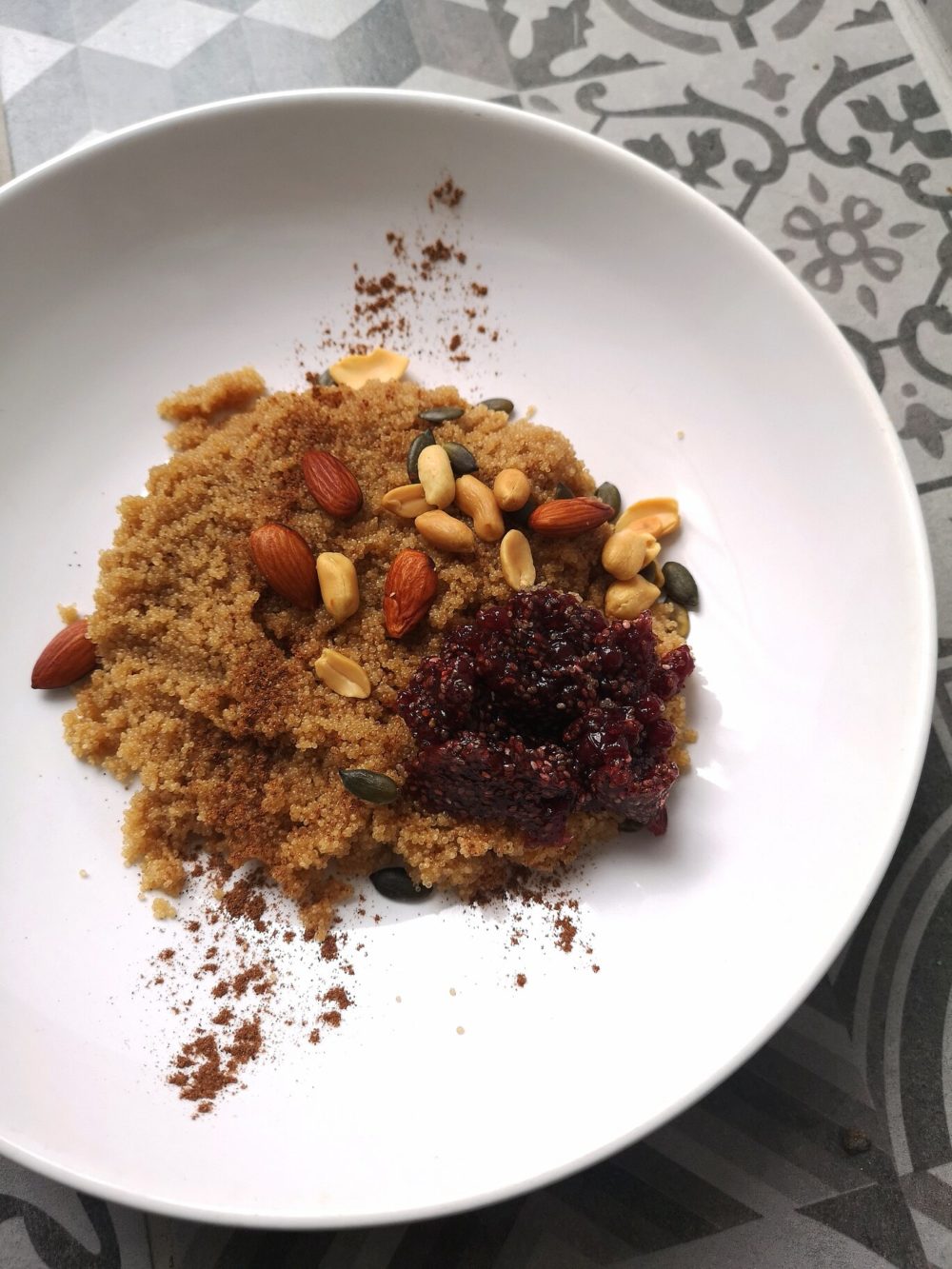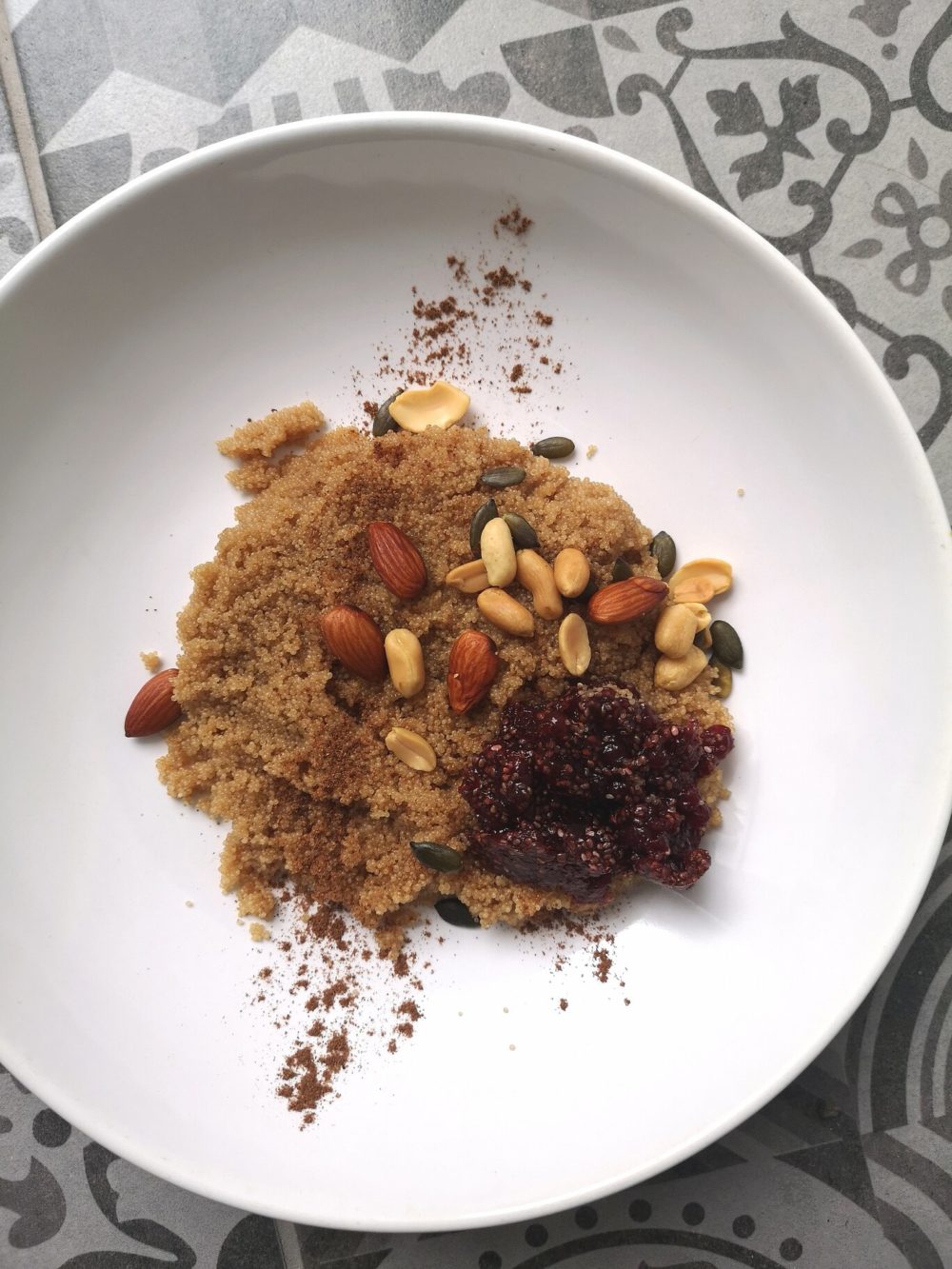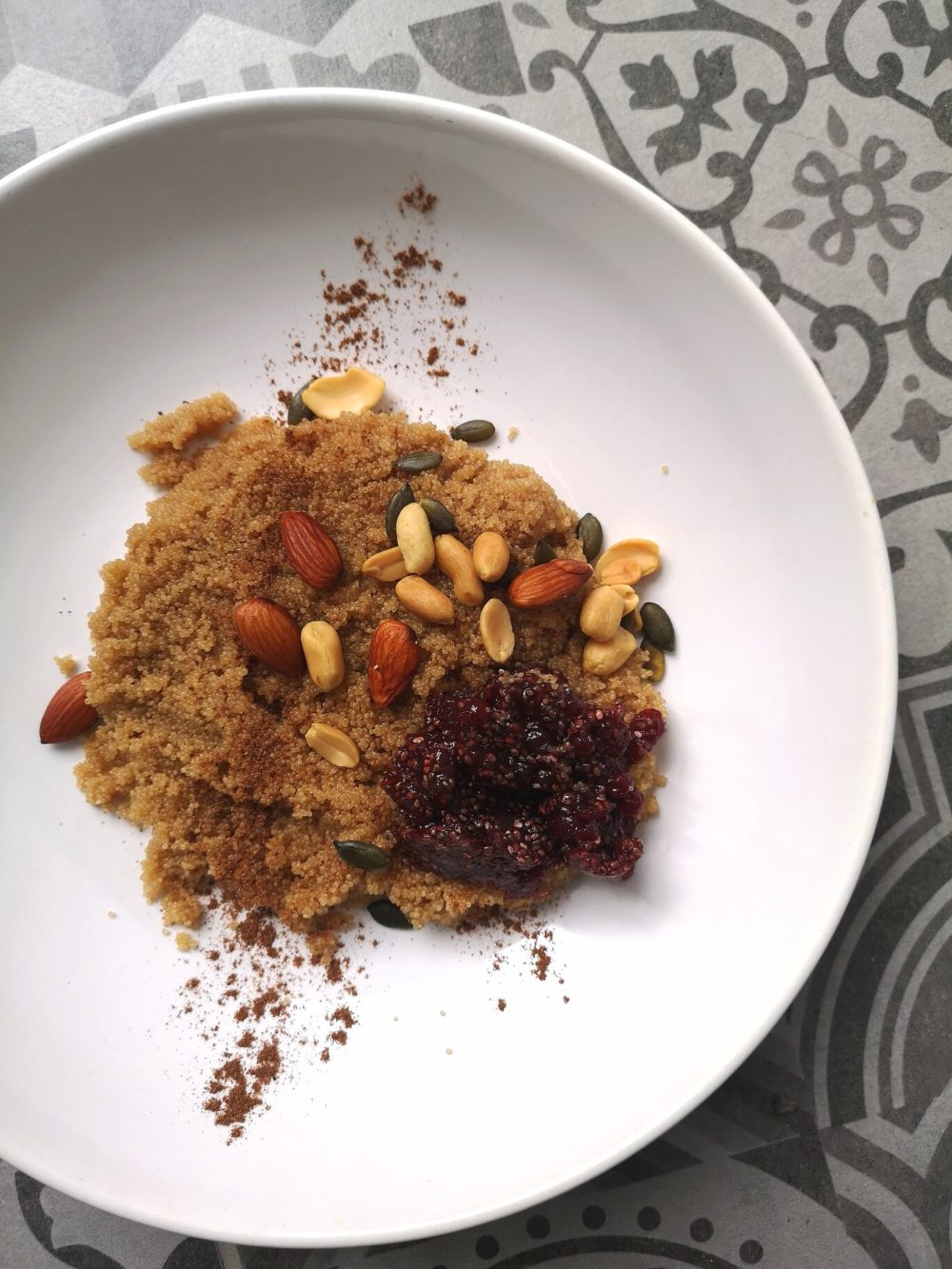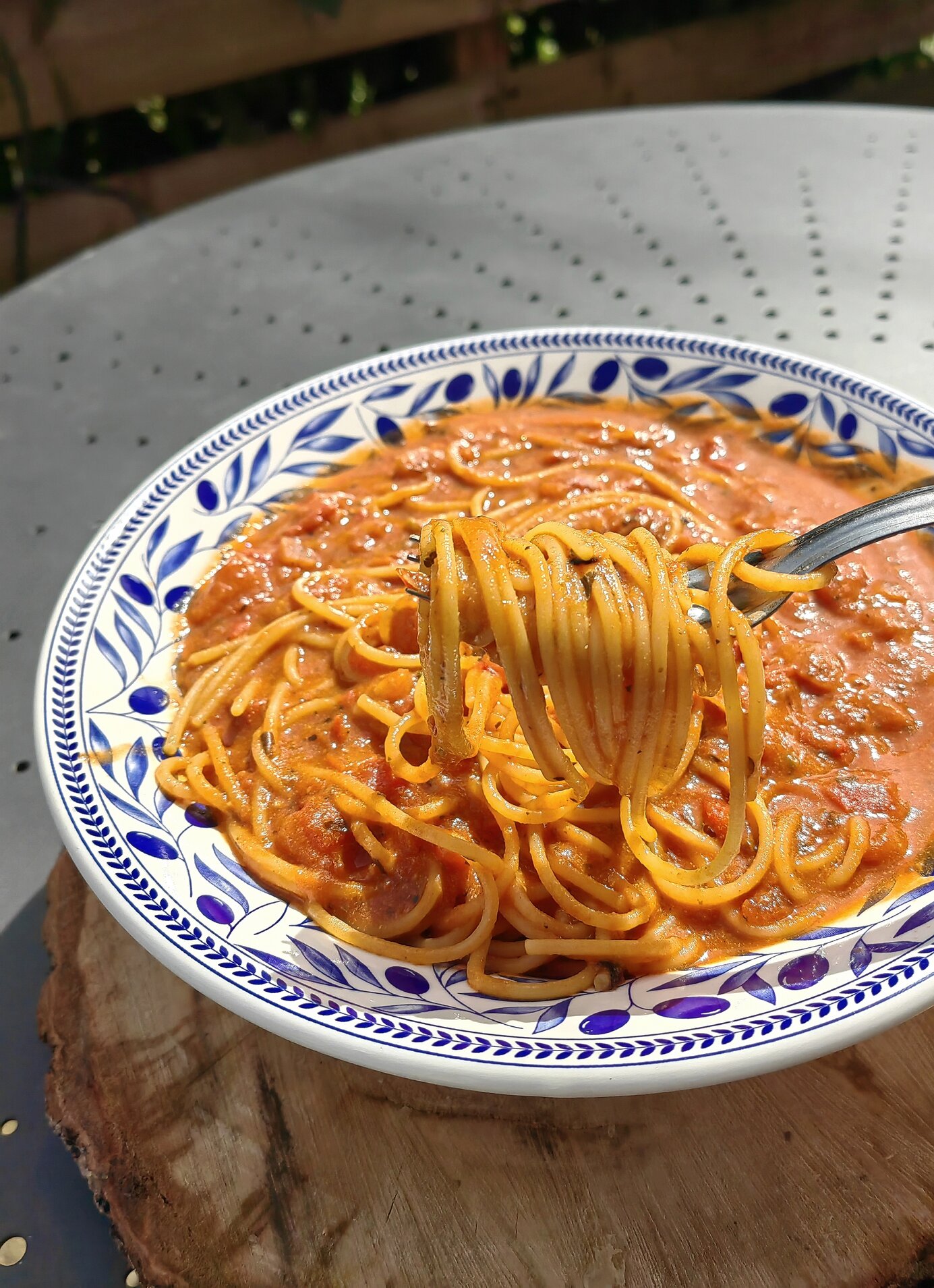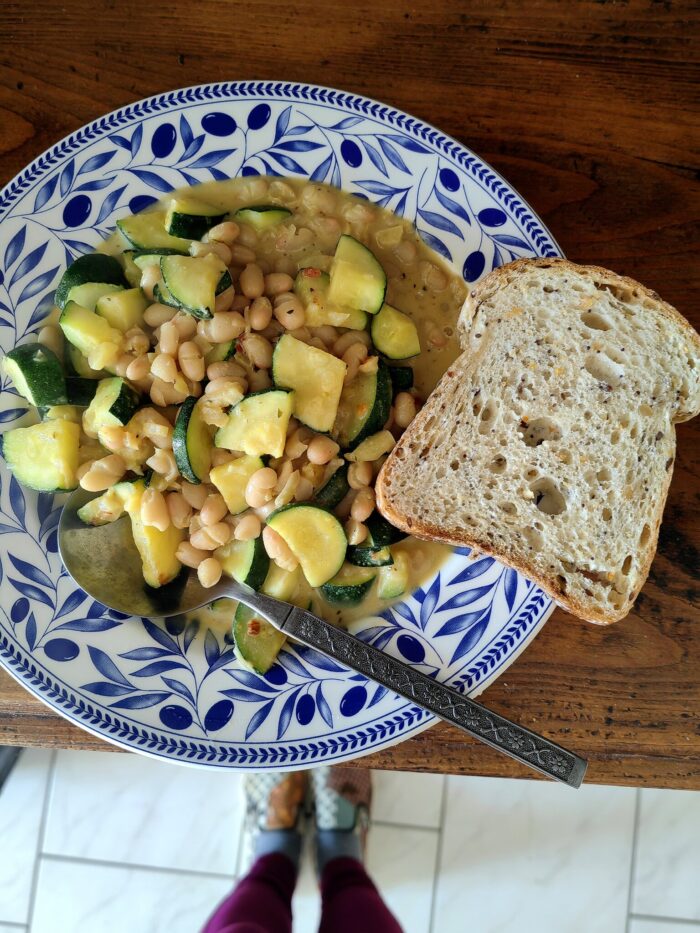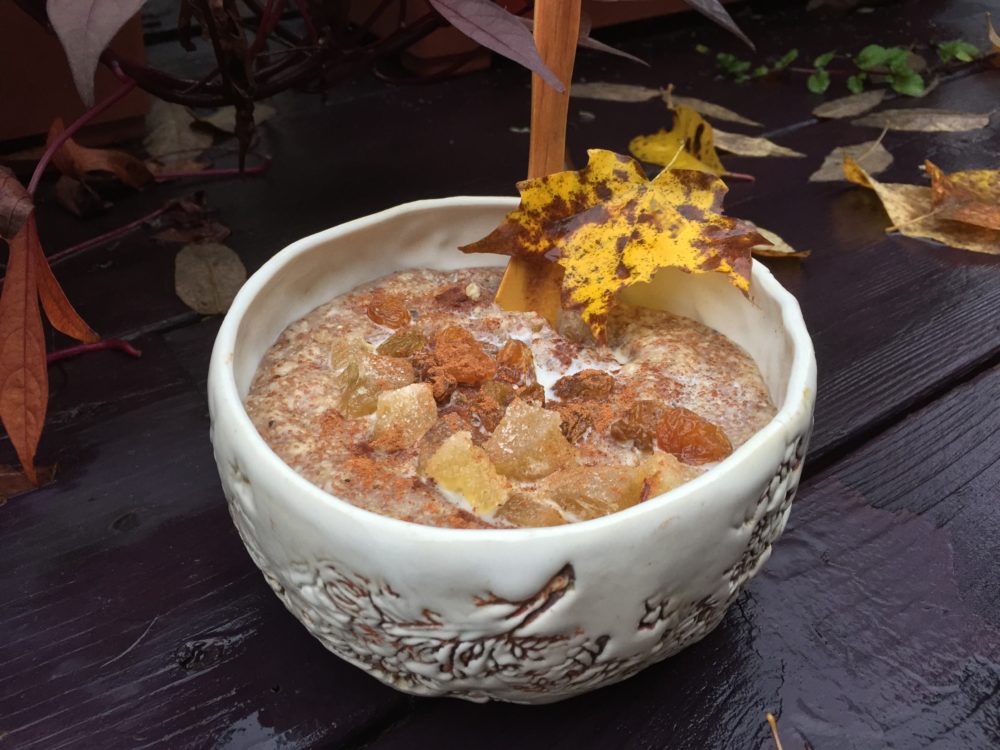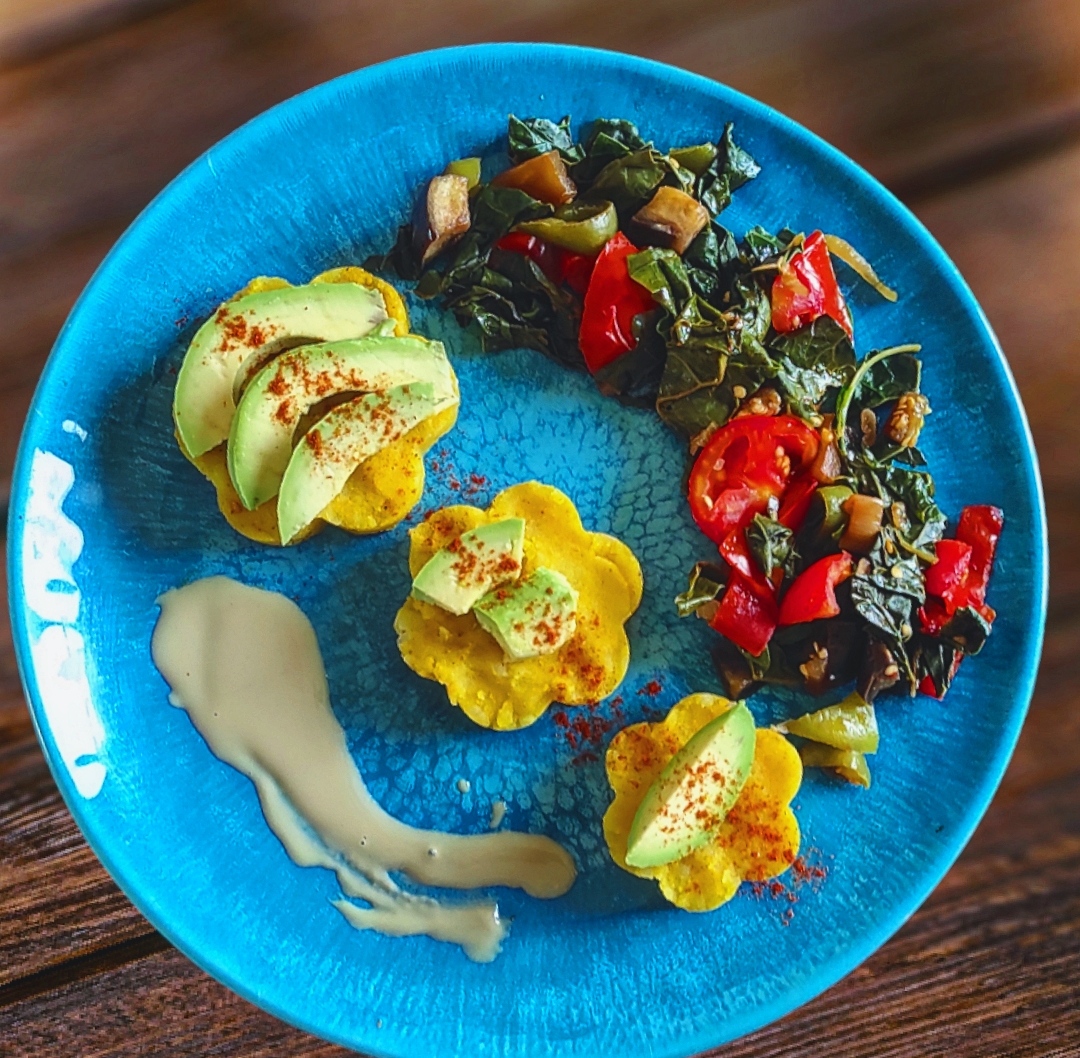Amaranth is the current most fashionable pseudo-grain, although it's been eaten for a thousand years apparently. It’s well known for high its levels of fiber and a complete set of amino acids. It’s easy to prepare, easier than oats for me, as you don’t need to babysit it to prevent burning.
Similarly to beans and nuts, amaranth contains phytic acid, which is tiny bit a problematic compound. Phytic acid binds to the phytic acid to minerals in our food, such as zinc or iron and prevents our bodies from absorbing them. It also makes it harder for our bodies to digest starches, protein and fats. To combat this it is recommended to soak the food in water for a while to neutralize it.
Aside from soaking, the porridge itself is super easy to make, it only takes about 15 minutes to prepare it. Once ready, it resembles cooked polenta.
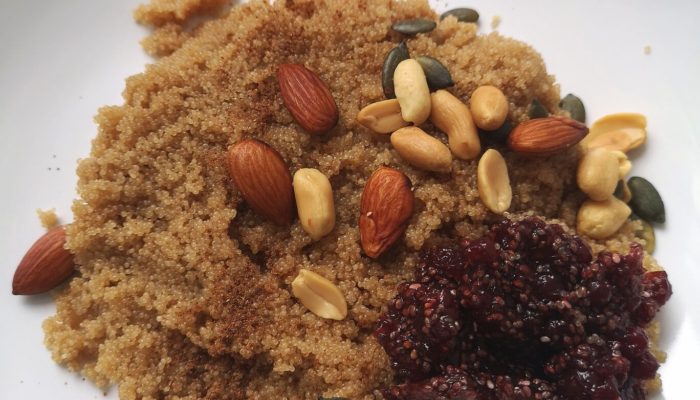

- ¼ cup amaranth
- ¾ cup plant milk
- ½ tsp ground cinnamon
- ¼ tsp ground ginger
- a pinch ground nutmeg
- a pinch ground cloves
- a pinch ground cardamom
- a handful seeds and nuts of choice
- optional maple syrup
- 2-3 tbsp raspberry jam
- 4 tbsp chia seeds

Directions
1. Place amaranth in a pot along with plant milk (I used almond milk) or a mixture of plant milk and water.
2. Add all the spices from cinnamon to cardamom.
3. Bring it to a boil, then cook it uncovered on low heat, stirring from time to time. It takes about 15 minutes to be ready (it resembles polenta once it’s cooked).
4. While the porridge is cooking, you can roast your nuts if you’d like and seeds on a dry pan and make quick chia jam.
For this in a smaller bowl combine the raspberry jam with the chia seeds and place it in the fridge until the porridge is done.
5. Serve the porridge in a bowl topped with raspberry jam, roasted nuts and seeds and maple syrup.
More breakfast ideas: Orange Quinoa Porridge with Caramelized Figs
Get more like this—Sign up for our daily inspirational newsletter for exclusive content!
__
Photo: Imola Toth
